Asus ZenFone 6 vs OnePlus 7 Pro: What’s the difference?
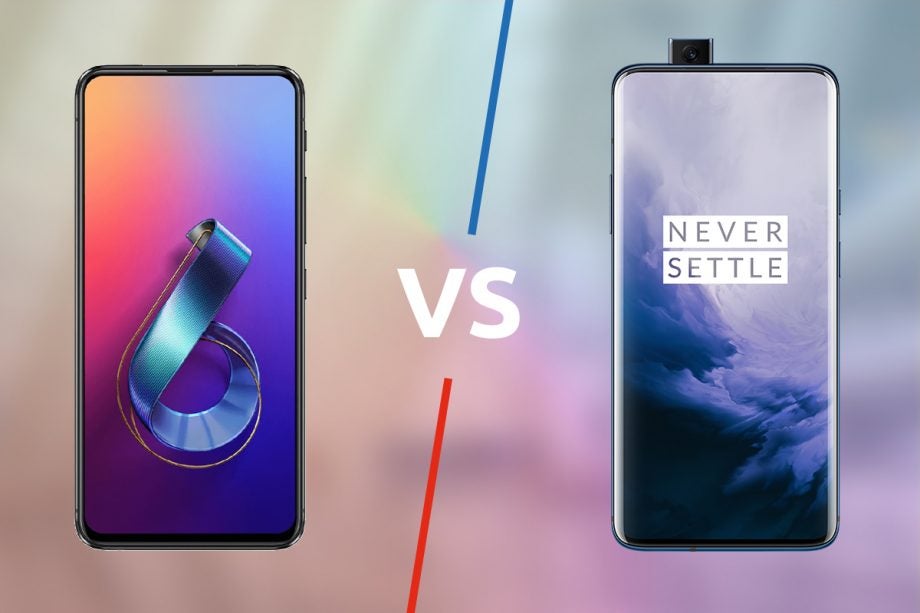
There have been an array of new high-end smartphones hitting the market of late, with the Asus ZenFone 6 and the OnePlus 7 Pro being two of the freshest-faced phones to make their debut.
Each sports some notable similarities but still take the form of decidedly different beasts, so which is for you? The sizeable 7 Pro or the intriguing ZenFone 6.
Asus ZenFone 6 vs OnePlus 7 Pro: Flip up or pop up camera?
The ZenFone 6’s signature feature is its flip up camera. The phone’s primary snapper and secondary ultra-wide angle sensor sit within a hardy liquid metal housing that, at the touch of a button, flips up and over the top edge of the phone to face forward. This gives you the full might of the ZenFone’s photographic capabilities for everything from selfies to video calls.
OnePlus too makes use of a mechanised system, with a pop-up 16-megapixel front-facing snapper that rises out of the top edge of the phone. The OnePlus’ front sensor can’t compete with the ZenFone’s main imaging setup but does promise greater reliability with lab testing promising full functionality for 300,000 actuations. By comparison, the ZenFone 6’s camera is assured for just 100,000 ‘flips’.
- Related: OnePlus 7 Pro Review
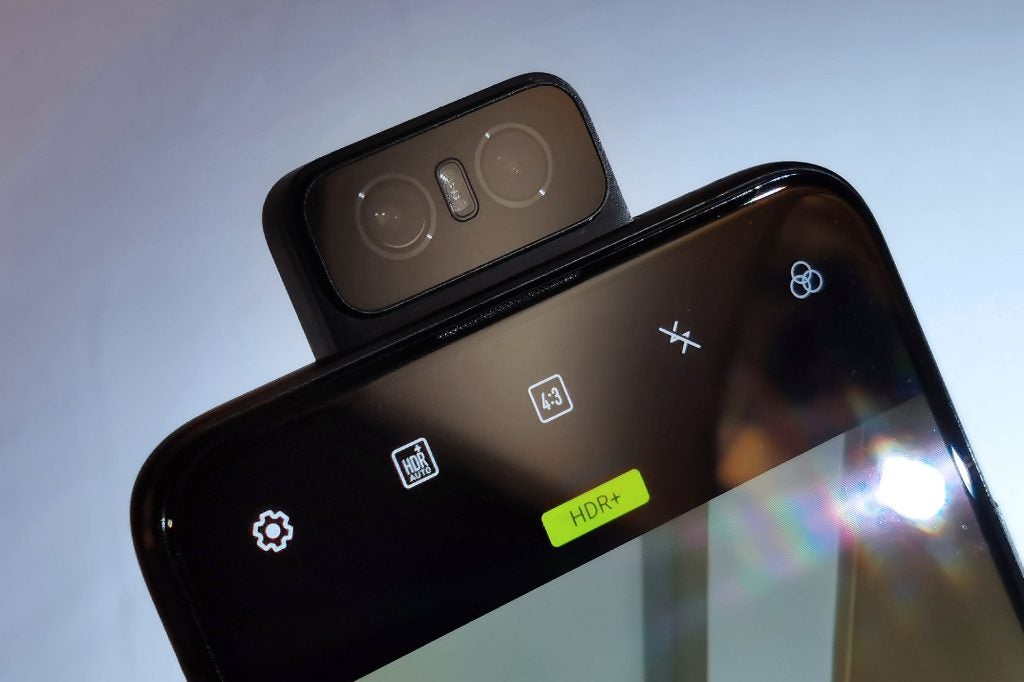
Say “hello” to the ZenFone 6’s ‘flip camera’
As for imaging ability, both phones rely on the same 48-megapixel Sony IMX586 sensor for their main photographic needs and both are supported by an array of algorithmic software smarts that promise to improve image quality. The OnePlus has Nightscape 2.0, while Super Night Mode is Asus’ equivalent low-light shooting mode.
The 7 Pro’s main camera also packs in OIS (optical image stabilisation) which should grant it improved sharpness and superior low-light performance over the ZenFone’s primary camera, which only makes use of EIS (electronic image stabilisation).
- Related: Best camera phones
Both setups also tote a party-piece. In the case of the ZenFone, you can move the camera module anywhere through its 180-degree field of motion, which is great should you wish to prop the phone up for a timed photo. This movement also allows for an ‘auto-panorama’, where you hold the ZenFone still while the camera does all the work, rotating and building a super-wide image in one swift move.
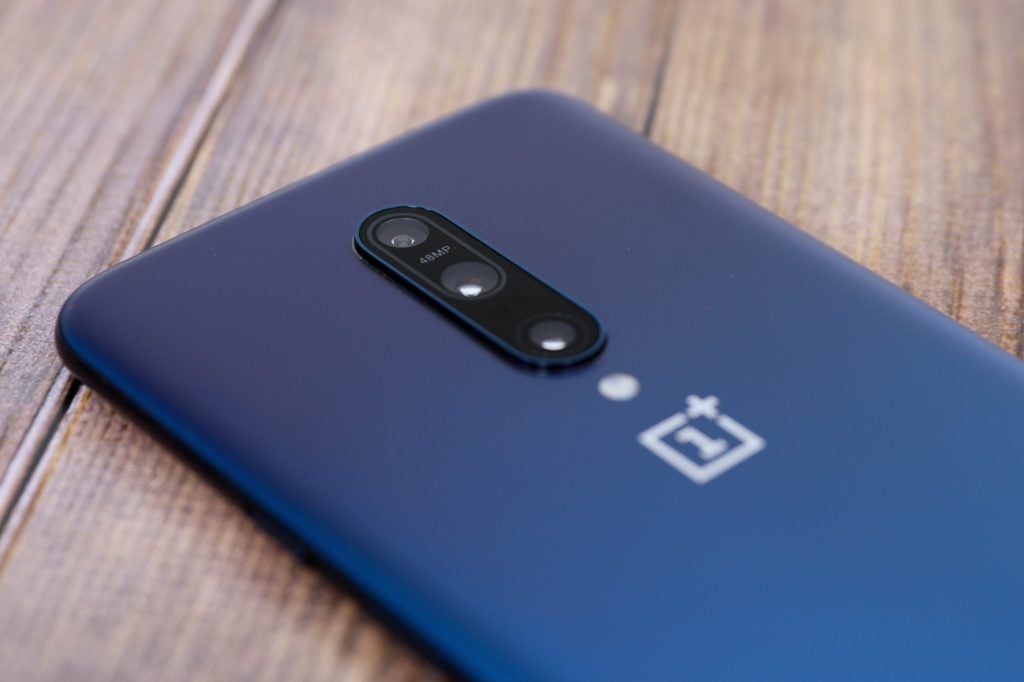
Meanwhile, the OnePlus’ triple-sensor arrangement doesn’t just match the ZenFone’s 48-megapixel main camera and 16-megapixel ultra-wide camera, it also boasts an 8-megapixel telephoto offering, complete with OIS and 3x lossless optical zoom.
Not only can you crop in on subjects without losing imaging fidelity but the sensor is a half-decent snapper in its own right – not always a guarantee on secondary and tertiary smartphone sensors.
Asus ZenFone 6 vs OnePlus 7 Pro: NanoEdge or Fluid AMOLED display?
Both phones subscribe to the current trend towards bezel-less displays; trying to slim down the borders around the screen as much as possible to grant you, the user, a more immersive and uninterrupted viewing experience. Both offer respectably biased screen-to-body ratios, with the OnePlus 7 Pro’s clocking in at 88.6 per cent and the ZenFone 6 reaching an even loftier 92 per cent.
- Related: Asus ZenFone 6 Hands-on Review
Despite this, when viewing these phones side-by-side in the real world, the design of the OnePlus grants cleaner, clearer visuals. For starters, its Fluid AMOLED screen features curved edges, that make the phone trickier to hold but helps the bezels along the side melt away. It’s also a larger, sharper display, measuring 6.67-inches and toting a QHD+ resolution, versus the ZenFone’s 6.4-inch 19.5:9 Full HD+ panel.
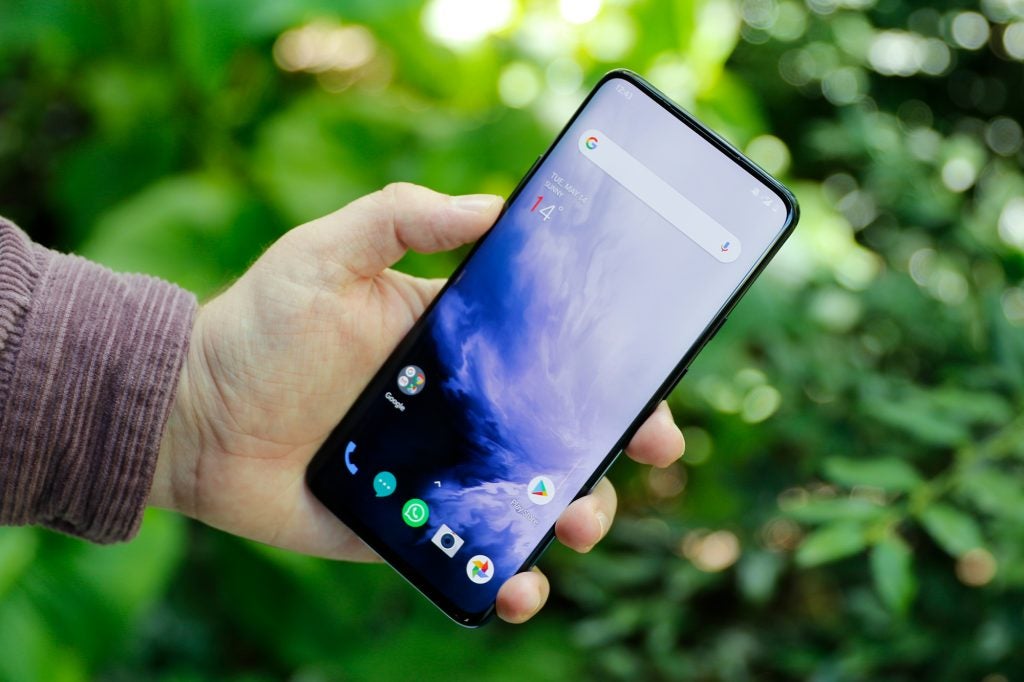
The 7 Pro’s screen is a tough act to follow
As the name suggests, OnePlus has also opted for OLED technology over Asus’ use of an IPS LCD panel, giving you true blacks, greater contrast and more vibrant colours.
Both screens employ a bevvy of technologies, including blue light filters and HDR support. However, the OnePlus’ more advanced HDR10+ compliance should offer a richer viewing experience, thanks to the nature of the standard’s maximum brightness and colour gamut support.
There’s one other major talent that leaves the ZenFone’s display limping behind the 7 Pros and that’s refresh rate. The ‘Fluid’ part of OnePlus’ Fluid AMOLED display technology relates to its unorthodox 90Hz refresh rate. Coincidentally, the only other phone that makes use of a 90Hz OLED panel is Asus’ gaming-focused ROG Phone, but that’s not what’s on the docket here.
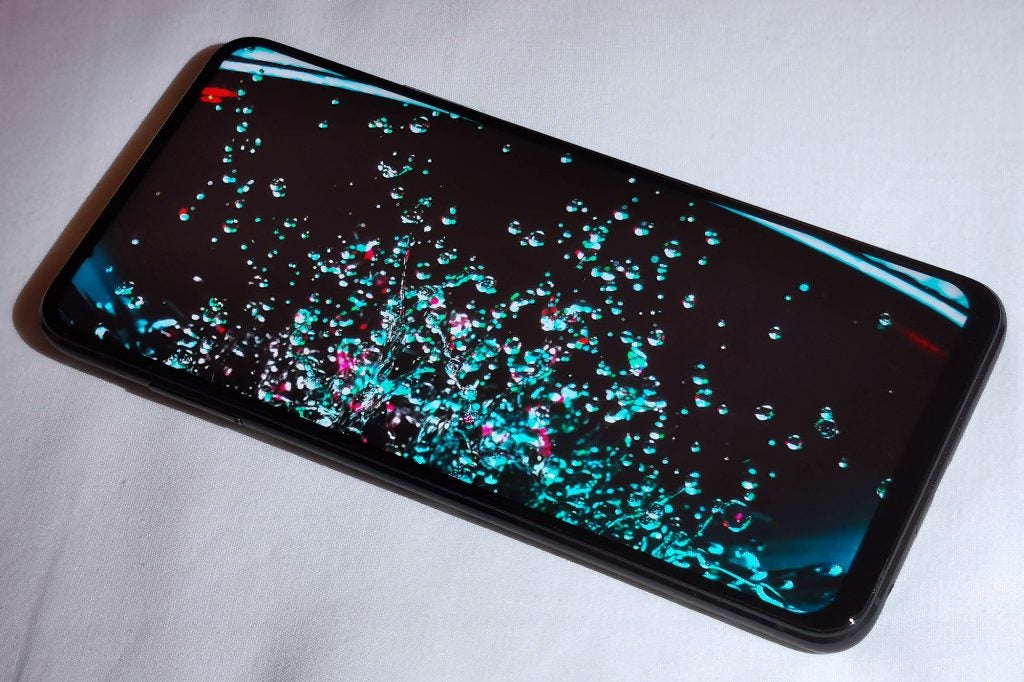
The ZenFone’s screen isn’t half bad
The higher refresh rate grants the phone, smoother, faster and more responsive-looking visuals. The effect it produces makes the phone feel like a true piece of cutting-edge technology and when viewed side by side with more conventional 60Hz panels, like the one used by the ZenFone 6, there’s no competition.
Asus ZenFone 6 vs OnePlus 7 Pro: Performance can mean many things
Qualcomm is having a good year, with almost every mainstream mobile manufacturer turning to the chip maker for its class-leading silicon. Both the Asus ZenFone 6 and OnePlus 7 Pro sport the company’s latest Snapdragon 855 flagship chipset, paired to either 6GB or 8GB of RAM on the ZenFone and 6GB, 8GB or a whopping 12GB on the 7 Pro.
You can expect performance on both phones to be stellar, worthy of their flagship standing, even if you only fork out for the base amount of memory on either device.
There are also integrated technologies on both devices to make the best use of the available memory in the pursuit of shorter app load times and faster interactions. OnePlus has created what it calls ‘RAM Boost’, while Asus’ OptiFlex software has been updated and improved for the ZenFone 6.
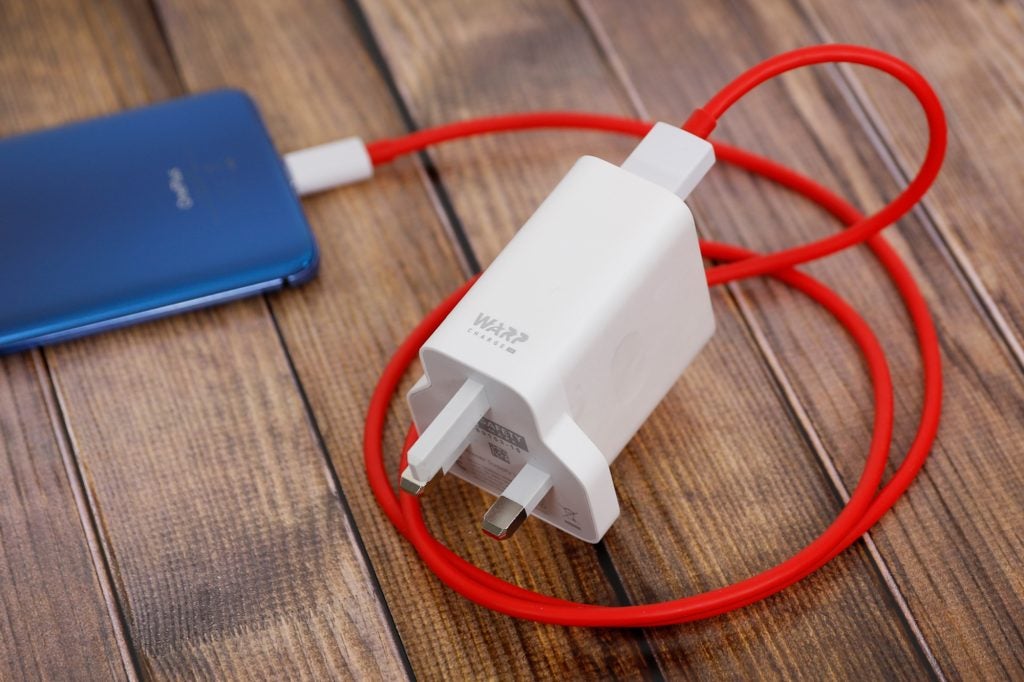
As for storage, the ZenFone wins for flexibility, with 64GB, 128GB and 256GB of internal space on offer, alongside microSD expandability up to a further 2TB by way of the phone’s triple SIM/memory card tray. The OnePlus, meanwhile, doesn’t allow for expandability with a base storage of 128GB and a larger 256GB model available too.
There’s a greater difference in the way these phones handle battery life and it’s a matter of perspective as to which technology trumps which. The OnePlus 7 Pro houses a respectably large 4000mAh cell that should be good for up to two days of use, while Asus has opted for an even larger 5000mAh power pack, that’ll grant significantly greater longevity on a single charge, versus its competitor.
On the flip side, although the 7 Pro might run out of juice sooner, its 30W Warp Charging technology can replenish the phone’s battery impressively quickly. The ZenFone 6 employs a far more pedestrian 18W fast-charger, which paired to the bigger cell size will result in significantly longer recharge times.
Asus ZenFone 6 vs OnePlus 7 Pro: Simplicity in software is key
The last piece of the puzzle when choosing the right phone falls to the software. Both handsets are underpinned by a base Android 9.0 Pie operating system but feature overlays that augment and restyle how things behave and look.
OnePlus’ OxygenOS user experience has proven itself for generations, with a clean interface that adds helpful features like ‘The Shelf’ – a place to keep widgets and other handy tools, a Night Mode (version 2.0 on the 7 Pro) that allows for greyscale reading and the like when nearing the end of the day, and useful gesture shortcuts for everything from camera access to the flashlight.
- Related: Best Android phones
The latest ZenUI 6, as it appears on the ZenFone 6 is a marked improvement over its predecessors, that similarly to Oxygen OS, tries to recreate the values of stock Android with a few additions, however, there’s still a more notable amount of bloat installed and stylistically, it lacks the clean design and ease of use of Oxygen OS.


